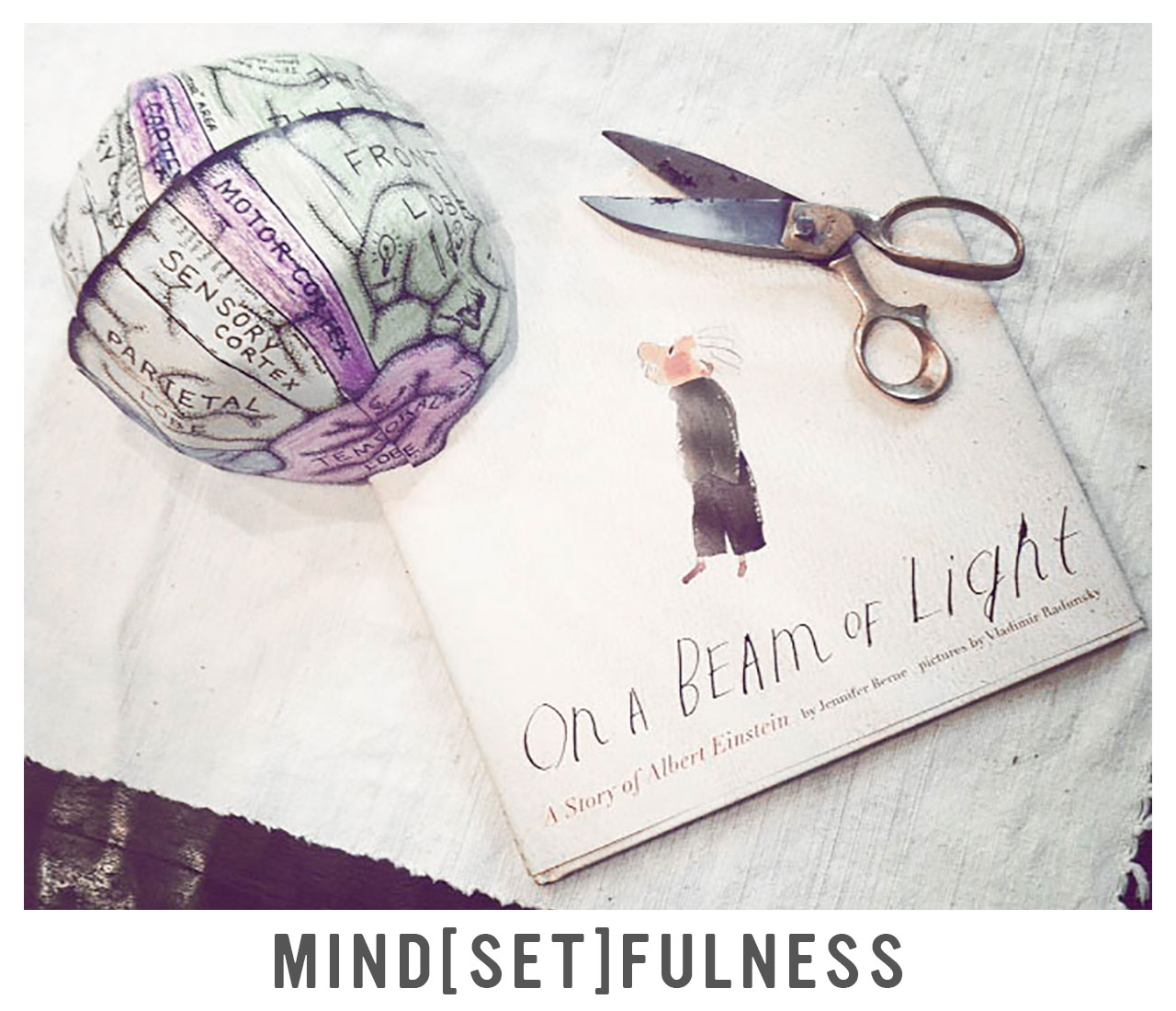Mind[set]fulness: The Importance of Practice + Perseverance
Growing up, I would watch my dad render, completely by hand, his architectural designs. I remember a conversation about these that started with me asking how I could draw like that. It ended with me mad at his suggestion that I would need to work at it. I was certain that, as the daughter of an architect, I was naturally blessed with spatial intelligence and the ability to manifest this gift through drawing. It never occurred to me that he actually took classes on it and spent countless hours practicing and perfecting his craft. I had a rigid understanding of artistic ability. What Dr. Carol Dweck would classify as a “fixed mindset”.
This theory does not dispute whether or not certain individuals have natural predispositions towards areas of study or skill sets. It does posit that ALL individuals can polish and improve their intellectual abilities. This idea of improvement and effort had never entered my mind when it came to my ability to draw. I figured you either had it or you didn’t. End of story.
Unfortunately, this rigid or “fixed” mindset is present in many people across many subjects. This includes school-age children. Dr. Carol Dweck was the first to study mindset and published her findings in Mindset: The New Psychology of Success. Since then, the ideas of fixed vs. growth mindset have spread like wildfire in the educational world. Schools and districts have made it the focal point of meetings and countless professional development sessions. There seems to be one population being left out of the conversation, however…parents!
The premise is fairly straightforward; that children and adults have well-developed ideas of their own abilities and skill levels. We all fall along a mindset spectrum ranging from fixed to growth. Our confidence in various subjects effects the choices we make and the risks we take in those areas. A child who sees themselves as “bad at math” probably won’t put forth a ton of effort or take risks that might reveal their self-diagnosed inadequacies.
Interestingly enough, children with the title, “gifted”, often fair the same in similar situations. Very few gifted children will take public risks when they feel challenged. It makes sense from a mindset perspective; this challenge is viewed as a threat and this feeling of disequilibrium is internalized as a deficiency! Adults are no different. And it is us, the adults in these children’s lives, who they are watching and listening to for cues. So, what can we do?
PRACTICE
What if we were to start practicing mind(set)fulness? Take a mental inventory about your own mindset. How do you view challenges? How do you view failure? Success? What value do you place on these two outcomes? Be honest! If we can get into the…well, mindset, of practicing and modeling the importance of effort, preaching it might become a whole lot easier; or at the very least, more genuine.
PERSPECTIVE and PERSEVERANCE
Meeting all kids at their own current level of understanding is one of the most important things we can do to cultivate a growth mindset. We know that each child has subjects that they seem to enjoy, and even excel at, more than others. It is okay for them to know this. The important thing is to not let a child check out in subjects they see themselves as less successful in. This seems like an obvious statement…and I admit that it is. How we keep them engaged and putting forth effort is perhaps not as obvious. In my classroom, we spend a lot of time talking about the topic of perseverance. We talk honestly about our own, and very individual levels, of perseverance. I do realize that this may be a conversation that is saved for older students. By fourth grade, students have a fairly sophisticated and even profound understanding of what it means to persevere.
It seems that having this sense of ownership not only on their work, but also on their feelings, has helped so much in building an environment where kids see the importance of perseverance. As the adults in their lives, recognizing our children’s ability to push through and persevere and offering encouragement when needed is a simple thing we can do. We can also have conversations with our kids about the fact that our intelligence and abilities can grow simply by working towards it. Research on children who are praised on their effort vs. praised on their product suggests that they are more likely to persevere and put forth the effort needed to complete more challenging tasks (Dweck, 72). And there it is…the “P” word. The magnitude of praise cannot be underestimated.
PRAISE
As parents and teachers, we have the very difficult job of choosing our words carefully…even meticulously. Have you ever found yourself in a situation admitting your own shortcomings to the children in your life? Parent-teacher conferences seem to be a natural breeding ground for these types of confessions. Countless times, parents telling their students that they, too, were bad in math with the teacher nodding sympathetically nearby. As if this is some sort of genetic Get-Out-of-Math-Free card. Sometimes we believe that if we admit to our children that we aren’t “good at something” it will soften their own encounters with failure. But, I don’t think it does. What if we were to admit our struggles with the clause of either “with work” or “extra effort”?
As if this is not difficult enough, adults also have the added challenge of being mindful of the words we pick out when issuing praise. Telling a child that they are “so smart” is easy and a natural thing to do…just like admitting that we really weren’t that good at fractions when we were growing up. However, the ramifications of that little piece of praise are far reaching. What happens when that child inevitably fails at something in the same subject area? The natural answer would be that they see themselves as the opposite of smart. They see themselves now as “so dumb”. Perhaps we could re-package praise. Praising the effort required for the task, praising the perseverance showed during the task, in short, praising the process with intention and specificity. Last, but certainly far from least, is good old-fashioned extension and application…in keeping with the “P” headers, we will call this one:
PLAY!
Watch: This video about mindset. Only the adult needs to do this part…
Read: On a Beam of Light: A Story of Albert Einstein by Jennifer Berne.
Discuss: This may be the sort of thing that you reserve only for middle to upper elementary children, but you know your kids best. Here are some conversation starters:
- Do you think Einstein always succeeded?
- Do you think Einstein ever failed at things?
- Where did Einstein have to persevere in his life?
Grow: Go to www.mindsetworks.com and sign up for a free trial to gain access to resources on teaching kids about the brain’s plasticity.
Make: Color, construct and converse about these paper brain hats and learn about the structure of this amazing organ (definitely wear them around too).

